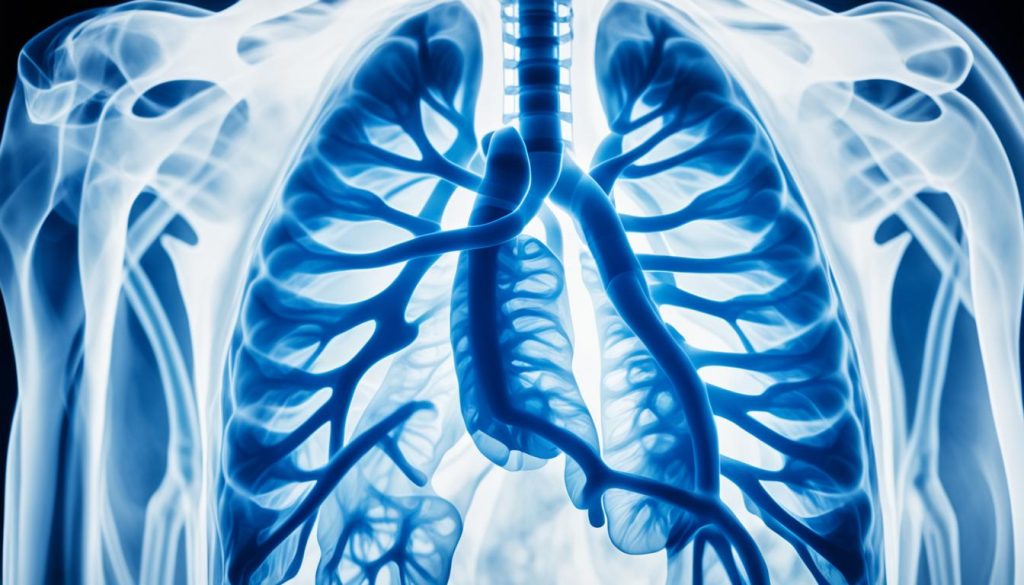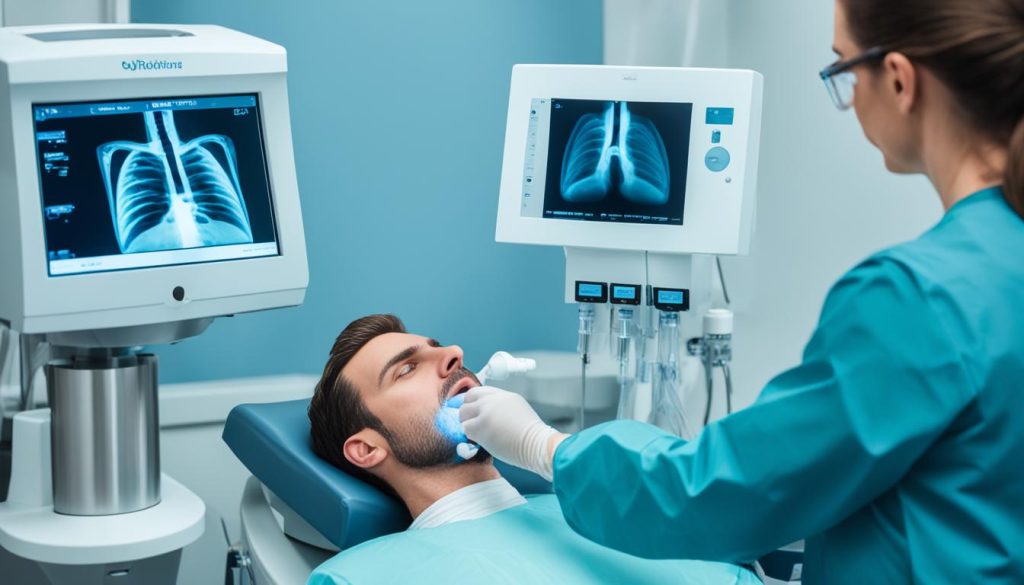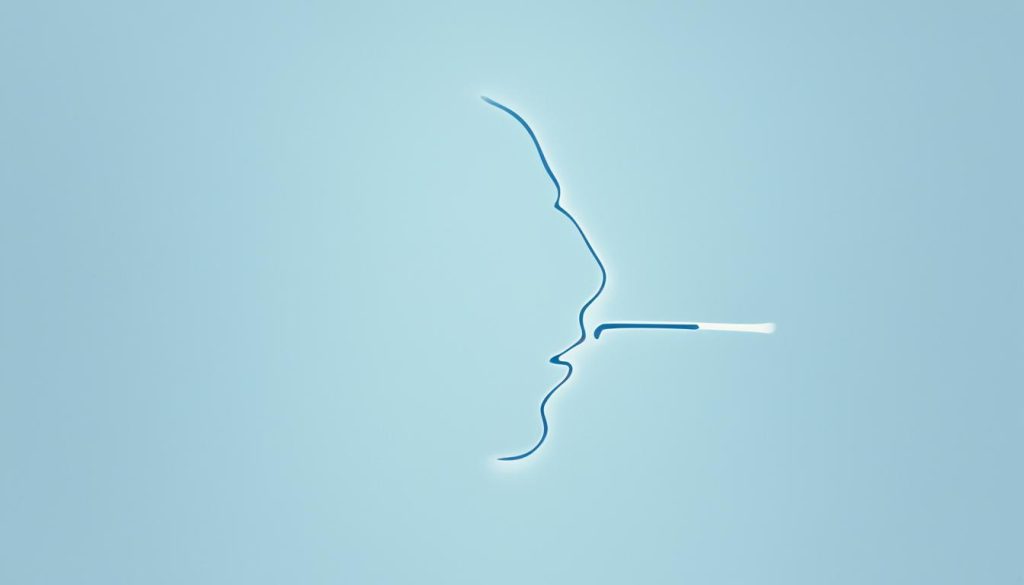Do you experience discomfort while digesting your food? Are you facing difficulty swallowing your meals? If you often find yourself in pain when eating and feel like your food is stuck, you may be suffering from a condition known as dysphagia.
Dysphagia refers to difficulty swallowing and can be a painful experience. It can occur at any age but is more common among older adults. There are various causes of dysphagia, including esophageal dysphagia and oropharyngeal dysphagia, as well as certain health conditions.
I Can Feel My Food Going Down and It Hurts
When you have dysphagia, you may experience symptoms such as pain while swallowing, a feeling of food being stuck, hoarseness, food regurgitation, heartburn, weight loss, and coughing or gagging when swallowing.
If you regularly experience difficulty swallowing or have concerning symptoms, it is important to see a healthcare professional. Prompt diagnosis and treatment are necessary to prevent complications related to dysphagia.
In the following sections, we will discuss the causes of dysphagia, the risk factors and complications associated with it, the diagnosing and treating methods, and tips for living with dysphagia. Stay tuned to learn more about this condition and how to manage it effectively.
Causes of Dysphagia
Dysphagia, the medical term for difficulty swallowing, can have various underlying causes. It can be classified into two main types: esophageal dysphagia and oropharyngeal dysphagia.
Esophageal dysphagia refers to the sensation of food sticking or getting caught in the throat or chest after swallowing. It can be caused by several factors, including:
- Achalasia: a condition where the muscles of the esophagus fail to relax properly, leading to difficulty in moving food down the esophagus.
- Esophageal spasm: involuntary muscle contractions in the esophagus that disrupt the smooth movement of food.
- Narrowed esophagus (stricture): a narrowing of the esophagus, often due to scar tissue from chronic inflammation or previous injury.
- Esophageal tumors: abnormal growths in the esophagus that can obstruct the passage of food.
- Foreign bodies: objects accidentally swallowed that get lodged in the esophagus.
- Esophageal ring: a thin band of tissue that forms a ring-like structure in the esophagus, causing narrowing and difficulty in food passage.
- Gastroesophageal reflux disease (GERD): a condition where stomach acid backs up into the esophagus, leading to inflammation and scarring.
- Eosinophilic esophagitis: an allergic condition that causes inflammation and swelling in the esophagus, leading to narrowing and difficulty swallowing.
- Scleroderma: an autoimmune disease that affects the connective tissues, including those in the esophagus, causing tightness and narrowing.
- Radiation therapy: treatment for cancer that can cause scarring and narrowing of the esophagus.
Oropharyngeal dysphagia, on the other hand, is caused by weakened throat muscles, making it difficult to initiate or control swallowing. It can be associated with various neurological disorders, neurologic damage, pharyngoesophageal diverticulum (a pouch that forms in the throat), and cancer.
Understanding the specific cause of dysphagia is crucial for effective treatment and management.

| Causes of Dysphagia | Type of Dysphagia |
|---|---|
| Achalasia | Esophageal dysphagia |
| Esophageal spasm | Esophageal dysphagia |
| Narrowed esophagus (stricture) | Esophageal dysphagia |
| Esophageal tumors | Esophageal dysphagia |
| Foreign bodies | Esophageal dysphagia |
| Esophageal ring | Esophageal dysphagia |
| Gastroesophageal reflux disease (GERD) | Esophageal dysphagia |
| Eosinophilic esophagitis | Esophageal dysphagia |
| Scleroderma | Esophageal dysphagia |
| Radiation therapy | Esophageal dysphagia |
| Neurological disorders | Oropharyngeal dysphagia |
| Neurologic damage | Oropharyngeal dysphagia |
| Pharyngoesophageal diverticulum | Oropharyngeal dysphagia |
| Cancer | Oropharyngeal dysphagia |
Risk Factors and Complications of Dysphagia
Dysphagia, or difficulty swallowing, can affect individuals of all ages, although aging is considered a risk factor for this condition. It is essential to understand the various risk factors and potential complications associated with dysphagia to ensure timely diagnosis and appropriate treatment.
Aging
As individuals age, the muscles involved in the swallowing process may weaken, increasing the risk of dysphagia. Aging can also result in decreased saliva production, making it harder to swallow food and liquids effectively.
Health Conditions
Certain health conditions, especially those affecting the neurological or nervous system, can contribute to dysphagia. These conditions may include stroke, Parkinson’s disease, multiple sclerosis, muscular dystrophy, and Alzheimer’s disease. Additionally, head and neck cancer or radiation therapy targeting the head and neck region can also lead to swallowing difficulties.
Table: Potential Health Conditions Associated with Dysphagia
| Neurological or Nervous System Disorders | Head and Neck Conditions |
|---|---|
|
|
Complications
Untreated dysphagia can lead to various complications, affecting an individual’s overall health and well-being. Some of the potential complications include:
- Malnutrition: Difficulty swallowing may result in inadequate food intake, leading to malnutrition and nutritional deficiencies.
- Aspiration Pneumonia: When food or liquids enter the airways instead of the esophagus, it can cause aspiration pneumonia, a severe lung infection.
- Choking: Dysphagia increases the risk of choking, especially when swallowing solid foods or large pieces.
It is crucial to address dysphagia promptly to prevent these complications. Seeking medical advice and appropriate treatment can help improve swallowing function and enhance overall quality of life.

Stay tuned for the next section, where we will explore different diagnostic methods and treatment options for dysphagia.
Diagnosing and Treating Dysphagia
Diagnosing and treating dysphagia involves a comprehensive approach that begins with identifying the underlying cause of the swallowing difficulties. Healthcare professionals may employ various diagnostic methods, including a barium swallow and endoscopy, to assess the condition properly.
A barium swallow is a diagnostic test wherein the patient consumes a liquid containing barium, which helps highlight any abnormalities or blockages in the esophagus. This test allows medical professionals to observe the passage of barium through the esophagus and identify potential issues that may be causing dysphagia.

An endoscopy is another commonly used procedure to diagnose dysphagia. During an endoscopy, a thin, flexible tube with a light and camera on the end is inserted through the mouth and into the esophagus. This allows doctors to visualize the esophagus and potentially collect tissue samples for further analysis, if necessary.
Treatment for dysphagia varies depending on the underlying cause. In some cases, working with a speech pathologist can be beneficial. A speech pathologist can help individuals develop techniques to improve swallowing and manage dysphagia more effectively. These techniques may involve exercises to strengthen the muscles involved in swallowing and strategies for proper positioning and timing during meals.
Dietary modifications are often recommended to people with dysphagia. These modifications may include altering the consistency of food and beverages to make them easier to swallow. For example, thickening liquids or pureeing solid foods can help prevent choking and improve safe swallowing.
Depending on the cause of dysphagia, medication may also be prescribed. For instance, individuals with acid reflux may benefit from medication to reduce stomach acid and alleviate symptoms that contribute to dysphagia.
In severe cases or when other treatments have been ineffective, surgery may be considered. Surgical interventions for dysphagia aim to address the specific cause or structural abnormalities that hinder swallowing. These procedures may help improve the functionality and motility of the esophagus, reducing or eliminating symptoms.
In certain situations, if swallowing difficulties persist despite other interventions, a feeding tube may be necessary. A feeding tube can provide nutrition directly into the stomach while bypassing the swallowing process, ensuring that an individual receives the necessary nutrients for proper nourishment.
It’s important to note that the appropriate diagnosis and treatment approach for dysphagia should be determined by qualified healthcare professionals based on an individual’s specific condition and needs.
Living with Dysphagia
If you have been diagnosed with dysphagia, there are several lifestyle changes that can help you manage your condition and improve your quality of life. By making small adjustments to your eating habits and working with a speech pathologist, you can effectively cope with dysphagia and minimize the risk of complications.
Eating Habits and Techniques
One important lifestyle change for dysphagia management is to eat slowly and take small bites. This allows your throat muscles more time to safely move the food down into your stomach. Additionally, be mindful of how you chew your food thoroughly before swallowing. Drinking plenty of water while eating can also help moisten the food and make it easier to swallow.

Swallowing Techniques and Exercises
Working with a speech pathologist is crucial in developing effective swallowing techniques and exercises. They can guide you through exercises that strengthen the muscles involved in swallowing, making the process easier and less uncomfortable. These techniques may include exercises for the tongue, lips, and throat, as well as posture adjustments to facilitate better swallowing.
Addressing the Underlying Cause
In addition to lifestyle changes and exercises, it is essential to address the underlying cause of dysphagia. By identifying and treating the root cause, you can prevent complications such as malnutrition and aspiration pneumonia. Your healthcare provider will work with you to develop a personalized treatment plan that may include medication, dietary modifications, or even surgery.
Living with dysphagia requires dedication and ongoing management, but with the right lifestyle changes, swallowing techniques, and addressing the underlying cause, you can improve your swallowing function and minimize the impact of dysphagia on your daily life.
Conclusion
Dysphagia, the medical term for difficulty swallowing, can be a painful condition with various causes. It is crucial to seek prompt diagnosis and treatment to address the underlying cause and prevent complications. Lifestyle changes, dietary modifications, medication, and even surgery may be necessary for effective management of dysphagia.
By working closely with healthcare professionals, individuals with dysphagia can learn techniques to improve swallowing and prevent complications. Learning to eat slowly, take small bites, and drink plenty of water while eating can make a difference. Speech pathologists can provide valuable guidance on swallowing techniques and exercises to strengthen the swallowing muscles.
Addressing dysphagia is important to avoid complications such as malnutrition, weight loss, dehydration, aspiration pneumonia, and choking. With the right treatment and support, individuals with dysphagia can effectively manage their condition and improve their quality of life.




